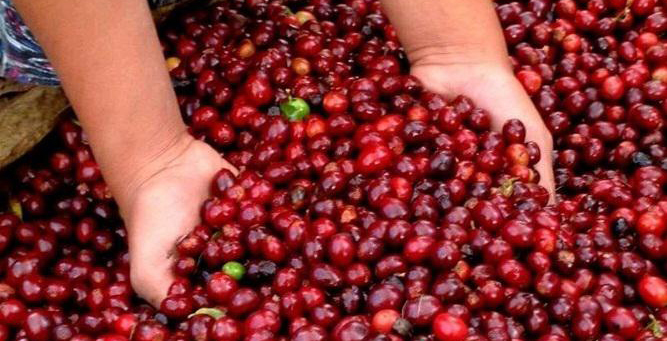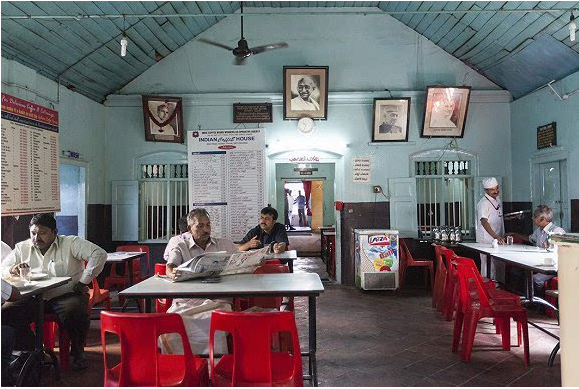Reading the third Wave of Coffee from Yega Xuefei's past Life and this Life (I)
Jiaxiang Guide: Yega's beans are definitely a hot spot in Ethiopia in recent years, and they seem to represent the third wave of coffee. Why is it suddenly popular? The following brings you to read the third wave of coffee from Yega Xuefei's past life and this life.
Now when it comes to Ethiopian coffee beans, the first reaction of most coffee lovers is Yega Xuefei, and the other reactions may be nothing more than Harald, Native Rose Summer, Lim, Sidamo. And the limelight of Yejia has continued unabated in the past two years, which makes people really impressed with this small type of beans.
With regard to Yejia Xuefei, to be exact, it entered the country a long time ago, but it was called Mocha at that time, and the latter sub-producing area was called Yejia, and then it became popular. In the last three or four years, with more and more detailed grading, Yejia Xuefei has become more and more popular. Let's take a look at the following pictures as to how much popularity there is. The price was erased. In case there is any objection)
Qianjie Cafe Taobao Shop
Coffee shop Taobao shop
In our two Taobao stores, two of the first three are Yejia Xuefei, you can imagine its popularity.
Yejia became famous for its iconic citrus and lemon blossoms and the taste of lemon black tea, and now it is more commendable for its tropical fruit flavor in the sun. Yejia Xuefei is popular with many coffee lovers because of its easily recognizable flavor, and it also makes many people who are initially exposed to coffee feel different from the instant Starbucks flavor before.
Of course, Ye Jia Xuefei will also make a little oolong.
Because Yejia itself is mainly granulated adzuki beans, it is suitable for medium-shallow baking, after all, it is a native species, and it is impossible to be as uniform as beans exported in size from Central and South America. Yejia's grading is based on physical defects and cup test quality. So in fact, the size of the original beans is not the same, but now the size of Yejia on the market is surprisingly the same, but not big. Referring to the Sidamo Sun G3, you can actually know what the native species looks like, but you can also see the raw bean materials of bean merchants that write Yejia beans as Tibika. According to common sense, if the fruit is so sour, it should be bourbon.
As a well-deserved representative of the third wave of coffee, Yejia Xuefei is characterized by its easily identifiable flavor. Second, it is easy to show its characteristics when the a value is 55, which requires a deeper baking degree than the traditional Central and South American water-washed beans, and the suitable a value may be about 25-40.
As for why, although some people like to use a chart to explain that the sour taste decreases and the bitterness increases as the baking temperature grows, the taste of the coffee and the beans themselves are actually wonderful things. It is not that the sour taste is gone and the rest is bitter, nor does it mean that the sour aroma substances are fixed. The chart does not tell us that these lost aromas can still be converted into other substances. The complexity of our oral senses is not drawn by a few lines in the picture.
Coffee bean is not only a kind of plant fruit, but also a kind of crop. The existence of Yejia Xuefei better explains the attribute that coffee is a fruit. The third wave of specialty coffee has been trying to interpret the regional flavor of coffee, as for this question, if you look at the counter-cultural coffee flavor wheel, nearly half of them have a description of the flavor of fruit. There are many features that people can think of as fruit at a glance, so I won't repeat them below. And the flavor of Yejia can be compared with each other.
Source: official account of Coffee Circle
Important Notice :
前街咖啡 FrontStreet Coffee has moved to new addredd:
FrontStreet Coffee Address: 315,Donghua East Road,GuangZhou
Tel:020 38364473
- Prev

Coffee Xiaobai classroom, how much do you know about coffee beans?
The history of coffee beans first tell you the historical story of coffee beans. Legend has it that around the tenth century AD, on the Ethiopian plateau of Africa, a shepherd Carl found sheep excited after eating some kind of red fruit. As a result, Carl distributed this incredible red fruit to the locals, and its magical effect spread. Picture: coffee tree
- Next

The Indian Cafe is a flowing feast.
Stuart Freedman was stunned when he first set foot on the soil of Delhi in the mid-1990s. The London-based photographer has been to South Asia and the Middle East, but the bustling Indian capital still caught him off guard. So when he found himself in the spacious and comfortable table of the Indian Cafe (Indian Coffee House) on Baba Kharak Singh Marg Street
Related
- Why can American refills for free? The difference between Americano and American drip pot coffee
- Being chased out of the rain in front of Starbucks?! Store: Sheltering from rain under umbrellas poses a safety hazard
- The white moonlight has changed?! Lucky launches "Big Winter Pear American"
- Hand-brewed coffee three-stage method, high-sweet and universal brewing method to share! What does the high sweet water level of hand-brewed coffee mean?
- What is the difference between raw, refined and full espresso coffee? How to extract espresso and taste good?
- A complete list of coffee bean names and their meanings! What is Yejia Shefi coffee? Where is Mantelin coffee?
- What grade does Arida Manor Kaduai coffee beans belong to? What treatment is Arida ASD slow anaerobic sun exposure?
- The milk tea cup becomes smaller?! Overlord Tea Girl launches a new "Return to Yunnan" series
- Accused of selling counterfeit and high-priced coffee beans! Well-known boutique coffee brand "Oukelao" bowed and apologized!
- How to make espresso dumplings? Can I eat coffee and glutinous rice balls together?

